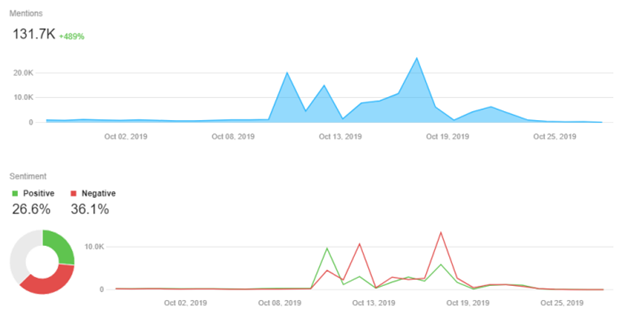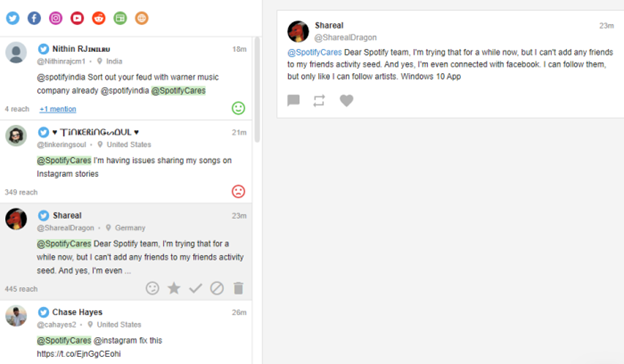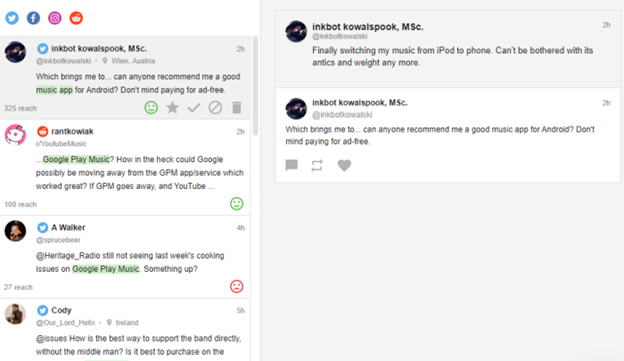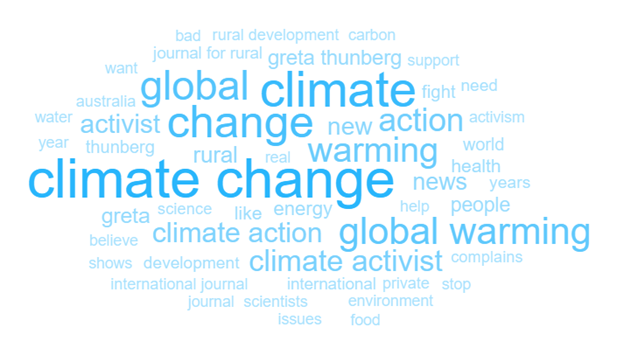Social Media Listening: The Ultimate Guide
Unless you’re selling literal ice to penguins, someone is talking about your brand even as you’re reading this. What is even worse, you will not know about it unless they tag. Social media listening is meant to fix that.

More likely than not, this conversation is happening online. More likely than not, your brand name goes untagged or even misspelled.
A different scenario: someone not yet aware of your brand is looking for a product you’re offering. Or sharing feedback on their experiences with your competitors’ products or services. If only there were a way of getting access to these conversations, just a tiny fraction of the billions of conversations happening online every day…
Wait, there is a way! And it doesn’t even require hiring a dozen investigators to track every interaction on social media and beyond. Ladies and gentlemen, meet social listening.
Social listening is the process of tracking and analyzing every mention of your brand, hashtag, or any keyword, found online using social monitoring and listening tools.
Online here means social networks, news websites, forums, blogs, reviews, and the entire web as such. Every mention is exactly that: every mention, including misspellings, abbreviations, or ambiguous and common brand names. Analyzing means transforming mentions into social data insights that help you with the following:
- Monitoring brand health,
- Running competitor analysis,
- Enhancing customer support,
- Collecting product feedback,
- Boosting social selling,
- Mastering influencer marketing,
- Conducting any research, and so much more.
Let’s break social listening down into simple steps to see what social listening tools let you do.
1. Start Monitoring your Brand Health
Fact of life: brands need management. Even if you’ve built the most perfect of brand reputations, it needs to be maintained that way. This is where social media monitoring steps in, allowing you to see what kind of buzz your brand gets.
By keeping tabs on the volume and sentiment of conversations about you, you stay in charge of all your marketing activities, be it individual events or long-term campaigns.

Mentions and sentiment graphs. Screenshot from Awario
Social listening offers non-stop monitoring, which means that by creating an alert for your brand name you get heads up on any spikes in the volume and tone of mentions. This lets you track your brand performance, check the sentiment of your mentions, and address any reputation crises before they blow up.
2. Run Competitor Analysis
In addition to monitoring your own brand health, social listening brings you intel on the competitors you wish to track, along with insights into their products, strategies, customers, and market share.
Set up monitoring of your competitor brands to find out how much they’re talked about, as well as what kind of buzz that is. Social listening lets you run full-on market research, as measuring share of voice on social is the closest you get to assessing market share.
If you want more specific insights into any of your competitors, social media monitoring tools offer brand-to-brand comparisons with breakdowns of all social listening metrics.
3. Speed up your Customer Support
When voicing concerns on social media, people expect to be heard, fast. This is especially true for customer support issues, where response time is often favored above everything else.
Because social listening is non-stop monitoring of brand mentions, you get notified of customer support requests among other things as soon as they’re posted. You then get to respond to the mentions in-app, as social listening tools let you interact with users publicly or via DMs.

Customer support requests to Spotify. Screenshot from Awario
4. Collect Product Feedback
While most customer support requests come tagged, product feedback is not always so easily detectable. Social listening is there to provide a focus group-level intel with no additional resources or activities outside of your regular social media monitoring.
Once you have a feed of all brand mentions, you can filter them by keyword, language, region, reach, or any other factor that matters to your product feedback-wise.
A pro tip and an extension of the competitor analysis step would be to collect product feedback for other brands in your niche to know way ahead what isn’t going to work. You can then make more informed product development decisions and save yourself tons of trouble and expenses.
5. Boost Social Selling
Social media is the place of pre-purchase research. Before settling on a brand, it’s common for customers to ask around and browse real-user feedback on a particular product or service. Web monitoring is how you spot these conversations as well.
In addition to a slew of other insights, social listening tools bring you leads — the people looking for a product like yours right now.
Leads feed for Google Play Music. Screenshot from Awario
Your job is to engage with the potential customers, pitching your products, offering a free trial, or whatever your selling technique might be these days. Point is, social media listening tools leave you no excuse to skip selling on social.
6. Master Influencer Marketing
When done right, influencer marketing works wonders for brands of all shapes and sizes. Major influencers bring impressive numbers (true to both follower count and sales) and smaller ones build intimate bonds between a brand and their audiences.
Finding influencers to collaborate with is no easy task. Luckily, it’s one of the social listening domains, with influencers brought to you for overview and follow-up. For every brand mentions alert you set up, you get suggestions on influencers to collaborate with.
Naturally, social listening tools let you engage with influencers right away, attaching notes or adding tags for smooth navigation.
7. Conduct Research of any Scale
Because social listening is about scanning the entire web for mentions of any keyword, it’s safe to say that you can run research on any topic using social listening tools. Whatever is important to your customers, be it Greta Thunberg or coronavirus, conduct effortless and comprehensive research and shape your marketing accordingly.
For a quick scan of public opinion, set up mentions monitoring and refer to the topic cloud to see what context any given keyword appears most often in.
Topic cloud for the climate change alert. Screenshot from Awario
Social listening is a solid alternative to polls and questionnaires as it relies on non-stop monitoring and real-user feedback. This gives you reliable insights to guide your marketing decisions.
Recap
Without any hesitation, social media is the world’s biggest database of consumer insights. Web monitoring is the neatest and most reliable way to get these insights, powering every aspect of marketing. Use this guide as a how-to for getting the most out of social listening and see how it transforms your work.